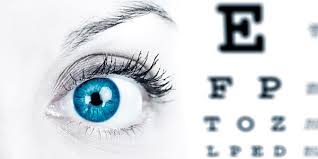
Visual impairment. It could be defined as the lack, decrease or defects of vision and includes pathologies ranging from cataracts to total blindness.
The objective is to sensitize the public around the world about the importance of preventing vision loss and avoiding blindness.
World Vision Day seeks to raise awareness about the prevention and treatment of vision loss. About 80 percent of blindness cases are preventable, either because they can be treated to regain visual ability or preventable.
Today there are 36 million blind and 217 million people with low vision worldwide, according to data from the World Agency for the Prevention of Blindness.
Due to the increase in life expectancy, the elderly population in the world increased considerably. This means that more and more people are at risk of suffering some type of visual disability from chronic eye diseases and aging.
That is why it is important to know what are the best strategies to take care of sight and prevent blindness and thus preserve this great sense in full power as long as possible.

The prevention and treatment of vision loss are among the most efficient and successful health interventions, leaving blindness aside. These interventions include cataract surgery, prevention of trachoma, distribution of ivermectin to treat onchocerciasis or river blindness, immunization against measles, distribution of vitamin A supplement for the prevention of childhood blindness, and delivery of corrective lenses.
World Sight Day and say no to blindness
Held every October 10, it is an annual event that focuses on the global problem of blindness. Its goal is to symbolize to the public about the importance of prevention and treatment of vision loss.

This event emphasizes the right to see and guarantee better access to health services. Access to eye care that reduces the magnitude of avoidable blindness is part of the obligation that governments of the world must fulfill.
“According to WHO data, 153 million people suffer from refractive errors or defects, commonly known by the names of farsightedness, myopia, and astigmatism”
However, millions of people living in low-middle-income countries lack these basic services.
What are the main causes of blindness?
Several factors can harm vision, but many of the conditions can be treated if detected early. The most important causes of visual impairment today are
Refraction problems.
Such as myopia, astigmatism, and farsightedness that are not corrected. In other words, people who suffer from them do not wear cravings or contact lenses.
Glaucoma
The increase in eye pressure can cause blindness if it is not treated as it is asymptomatic, patients do not notice it in time and when they go to the consultation they have already greatly reduced vision.
Waterfalls
It is the most preventable cause of blindness because it can be corrected with surgery. Lack of access to eye centers, scarce resources, and fear of surgery are the main reasons why people are not treated.
To conclude, you have endless options to avoid blindness, do not let fear win you, so consult the ophthalmologist and overcome fear, the health of your vision is unique.

